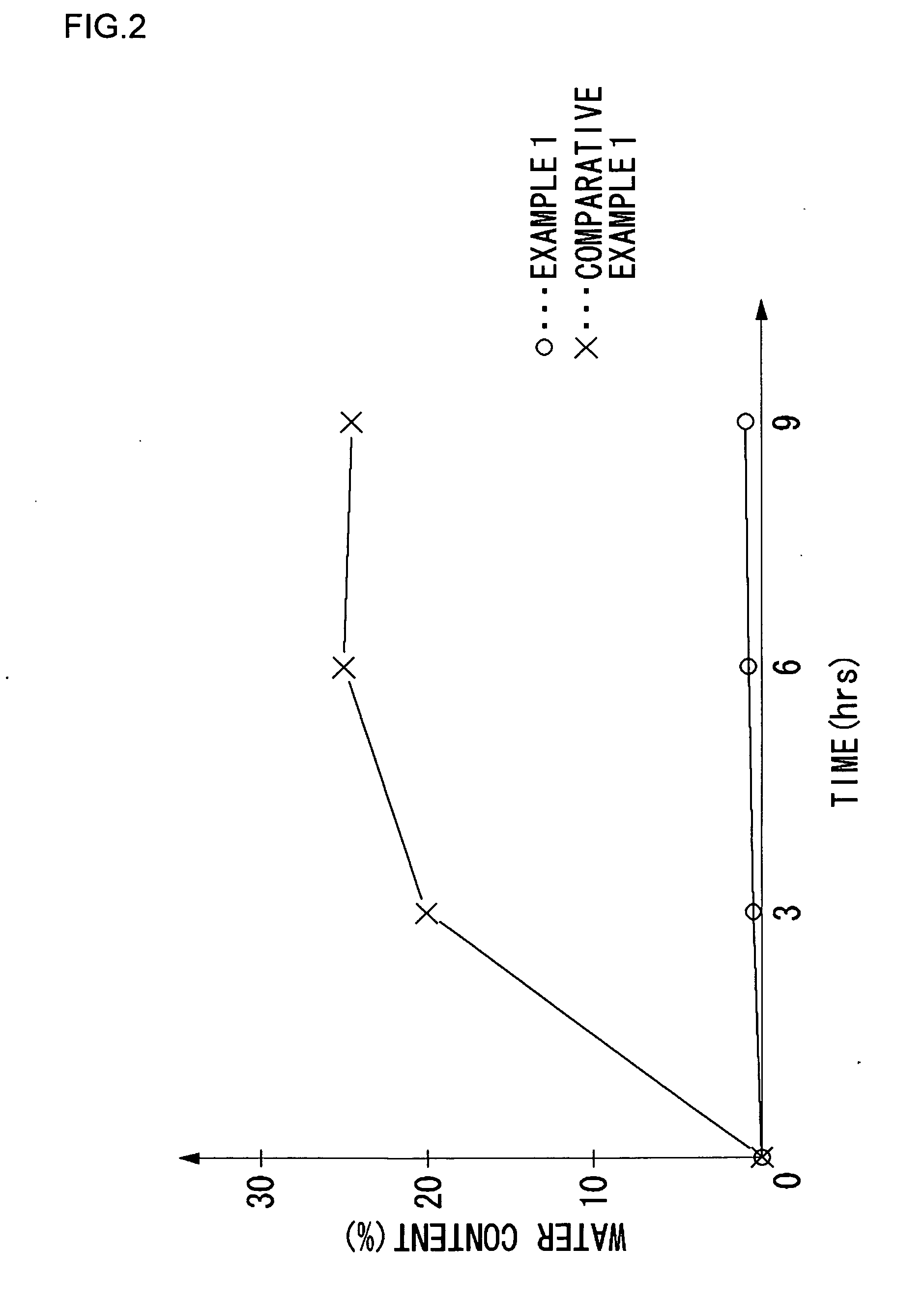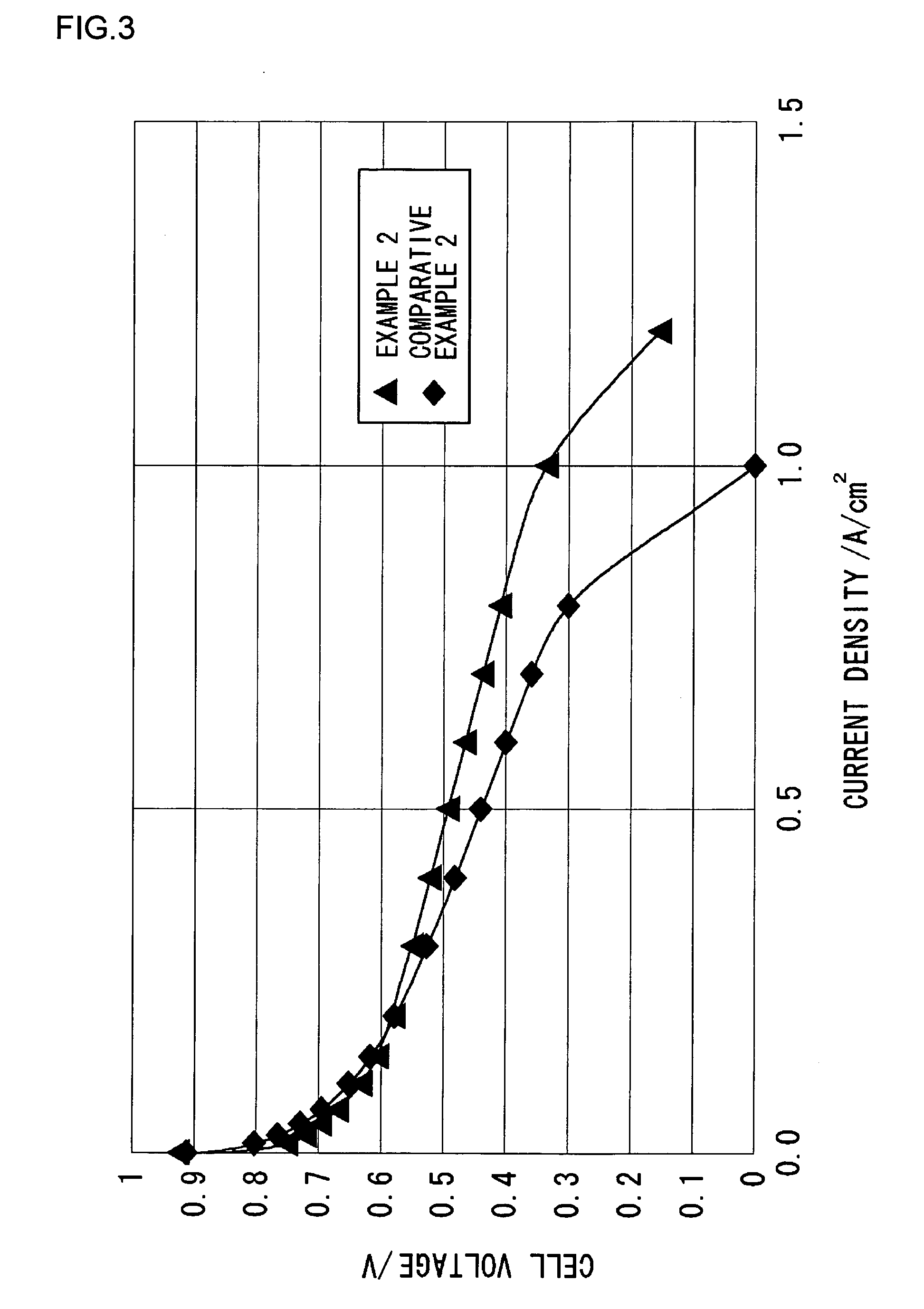Fuel cell electrolyte, membrane electrode assembly, and method of manufacturing fuel cell electrolyte
a fuel cell and electrolyte technology, applied in the field of fuel cells, can solve the problems of complex and large-scale fuel cell systems, shrinkage of basic polymer membranes, manufacturing difficulties, etc., and achieve the effect of improving gas diffusibility and reducing wrinkle production
- Summary
- Abstract
- Description
- Claims
- Application Information
AI Technical Summary
Benefits of technology
Problems solved by technology
Method used
Image
Examples
embodiment 1
[0036] A fuel cell electrolyte according to the present embodiment contains a basic polymer and a hydrolyzable phosphate compound expressed by the following general formula (2):
where R represents an alkyl or alkoxyalkyl group, and n is 1 or 2.
[0037] (Basic Polymer)
[0038] The basic polymer is preferably selected from the group consisting of polybenzimidazoles, poly(pyridines), poly(pyrimidines), polyimidazoles, polybenzothiazoles, polybenzoxazoles, polyoxadiazoles, polyquinolines, polyquinoxalines, polythiadiazoles, poly(tetrazapyrenes), polyoxazoles, polythiazoles, polyvinylpyridines, and polyvinylimidazoles. It is also preferable that the basic polymer contains poly-2,5-benzimidazole.
[0039] It is preferable that the basic polymer be cross-linked by a cross-linking agent. Cross-linking the basic polymer improves the rigidity of the fuel cell electrolyte and controls elasticity. Any cross-linking agent suitable for the cross-linking reaction of the basic polymer may be employed...
embodiment 2
[0056] A membrane electrode assembly according to the present embodiment is obtained by joining an anode to one of the sides of the foregoing fuel cell electrolyte, and joining a cathode to the other side of the fuel cell electrolyte.
[0057] The membrane electrode assembly of the present embodiment is characterized in that at least one of the anode and the cathode contains a phosphate compound expressed by the foregoing general formula (2). The membrane electrode assembly of the present embodiment is composed of the fuel cell electrolyte which has a level of proton conductivity equivalent to that of conventional fuel cell electrolytes while dimensional changes and wrinkles thereof are suppressed. Consequently, manufacturing the membrane electrode assembly requires no special facility such as a dry room, and thus allows a reduction in the manufacturing cost. Since at least one of the anode and the cathode is doped with the phosphate compound, the interface resistance between the elec...
example 1
[0066] Hereinafter, description will be given of the method of manufacturing a typical fuel cell electrolyte according to the present invention. Here, polybenzimidazole (PBI) was used as the basic polymer, and monoethyl acid phosphate as the phosphate compound.
[0067] Initially, PBI (20%) was dissolved in LiCl(2%)-containing dimethylacetamide. The PBI solution was cast onto a glass plate to form a PBI film.
[0068] Next, 0.15 g of PBI film (0.00049 mol) was immersed in a beaker of 67% monoethyl acid phosphate solution (solvent: water) at room temperatures for 24 hours. Subsequently, the PBI film was pulled out. The excess solvent adhering thereon was wiped off and removed with a wiping cloth, thereby completing the fuel cell electrolyte. The weight after the immersion was 0.25 g. As will be described, the fuel cell electrolyte of this Example was approximately zero in the water content. The weight of the monoethyl acid phosphate, or the dopant, was thus approximately 0.1 g (0.00079 m...
PUM
| Property | Measurement | Unit |
|---|---|---|
| Fraction | aaaaa | aaaaa |
| Fraction | aaaaa | aaaaa |
| Ratio | aaaaa | aaaaa |
Abstract
Description
Claims
Application Information
 Login to View More
Login to View More - R&D
- Intellectual Property
- Life Sciences
- Materials
- Tech Scout
- Unparalleled Data Quality
- Higher Quality Content
- 60% Fewer Hallucinations
Browse by: Latest US Patents, China's latest patents, Technical Efficacy Thesaurus, Application Domain, Technology Topic, Popular Technical Reports.
© 2025 PatSnap. All rights reserved.Legal|Privacy policy|Modern Slavery Act Transparency Statement|Sitemap|About US| Contact US: help@patsnap.com



